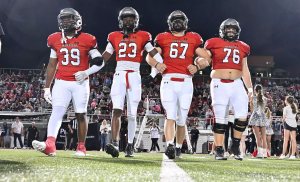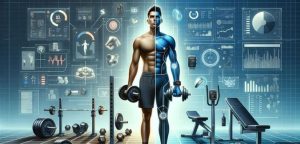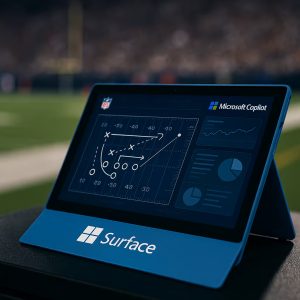Sports have always lived in the tension between instinct and data. But what happens when your data doesn’t just describe the past, but the future?
Every fan has asked it: “Why didn’t the coach just call that play?” Imagine if coaches could actually test those “what if” scenarios in real time without risking a player’s ACL or the game on Sunday.
That’s the world digital twins are opening up: a virtual mirror of athletes, stadiums, and systems where you can play out decisions safely without risking injuries, wasted money, or embarrassing blunders.
So, What Are Digital Twins?
In simple terms, a digital twin is a living, virtual replica of a real thing: an athlete, a stadium, or even a team’s operations. Unlike a static chart or report, a twin is fed real-time data, learns from it, and pushes insights back into the real world. Think of it as a safe rehearsal space: you can test changes without risking injuries, wasted money, or embarrassing failures.
At their core, digital twins rely on a few components.
First, sensors and data feeds—things like GPS wearables, RFID tags, video tracking, and environmental data such as weather or surface conditions. Second, physics models combined with machine learning blend raw motion rules with patterns learned from past performance. Third, a two-way feedback loop: the real world updates the twin, and the twin pushes actionable suggestions back. Finally, you need a simple interface, like dashboards or alerts, that coaches and staff can actually use when time is tight
The real kicker is that feedback loop. A twin doesn’t just describe what happened; it projects what might happen if you change something. In sports, that can mean predicting the risk of a hamstring injury, adjusting a drill sequence, or even testing stadium crowd-flow plans before a sold-out game.
The NFL’s Digital Athlete
The most prominent example in pro sports is the NFL’s “Digital Athlete,” a collaboration with Amazon Web Services. The league describes it as a virtual representation of an NFL player, built to understand, predict, and prevent injuries. It pulls in tracking data like speed, location, and acceleration, plus context equipment, weather, and video, and then simulates risk under different scenarios.
All 32 NFL teams are now plugged into it. During the 2023–24 season, the Digital Athlete started being used league-wide for the first time, giving clubs individualized insights instead of relying on league averages. The goal was simply to help players stay healthier, recover faster, and perform better.
This works because of the infrastructure the NFL already had in place. Its “Next Gen Stats” program captures each player’s movement 10 times per second—over 200 data points per play. That firehose of information fuels the machine-learning models AWS runs behind the scenes. Zebra Technologies, the league’s long-time partner, provides RFID chips in player equipment and the football itself, so the system knows where everyone is on the field in real time.
On the practical side, this means staff can simulate decisions: “If we shorten today’s drill progression, what happens to fatigue?” or “What if we change pad configuration?” Injury prevention is probabilistic, but the twin lets staff debate choices with data instead of gut feel. The NFL has even used it to model potential rule changes, like the new Dynamic Kickoff, running thousands of simulated seasons to forecast safety impacts.
Injury prevention is always probabilistic, but the Digital Athlete lets staff “pre-debate” choices with data instead of gut feel alone.
Twin Tech in Action Beyond Injuries
While injury prevention is the headline, the idea of digital twins is much broader. A stadium twin, for example, can simulate fan entry lines, concession traffic, or emergency reroutes before they’re ever tested in reality, with vendors like Simio providing modeling platforms.. Event planners use them to map out signage and broadcast sightlines weeks in advance. And coaches can simulate tactics: “What if this coverage shell meets that opponent tendency?” or “Could this drill sequence overload my linebacker group?”
The principle is the same everywhere: test virtually, then act in reality with more confidence.
In each case, the principle is the same: test changes in a virtual sandbox, then act with more confidence in the real world.
Day-to-Day Reality
In practice, a digital twin pulls together the data you’re already collecting: GPS and Catapult outputs, RFID positions, video clips, practice scripts, surface and shoe types, even sleep and recovery notes. Instead of those being scattered, a twin stitches them into one coherent timeline so your questions get answered in context.
The twin also needs to be usable. Most coaches don’t want to waste a lot of time on complex dashboards. Instead, they want simple, actionable nudges: “Progress this player. Hold that one. Flip these two drills.”
That’s why the NFL emphasizes explainability: staff need to see why the system is recommending something, not just accept it blindly.
Why Teams Care and What to Watch Out For
So why are teams embracing this?
For one, it speeds up decision-making. You can get a clear “is this change lowering exposures?” answer in hours instead of waiting weeks. It also creates a common language for coaches, trainers, medical staff, and executives. That means less opinion swapping and more data-driven conversations. And it preserves institutional memory. Whenever any staff turnover happens, the twin “remembers” what worked in similar situations.
But there are also some caveats. A twin doesn’t need to be perfect; it needs to be “good enough to choose.” Overly complex models can paralyze rather than empower. Integrating all those data sources takes real plumbing work. And if the system feels like a black box, trust will evaporate in no time.
The smart way to start is to narrow down: pick one outcome, like hamstring risk during install week. Inventory the data you already have, build a small simulation loop, and aim to generate just one meaningful alert per day. If coaches start acting on it without being pushed, you know it’s working. Then, and only then, expand the scope.
My Two Cents
Digital twins aren’t science fiction anymore! They’re already helping NFL teams make smarter, safer choices. The Digital Athlete proves you can turn torrents of data into a model that prevents injuries instead of just reacting. What excites me isn’t just the headline use cases like injury prevention, but the ripple effect: smoother stadium ops, sharper recovery planning, fewer expensive surprises.
That said, they’re not magic. A digital twin is only as good as the data feeding it and the willingness of people to trust it. The best use cases are the ones where a twin becomes a natural extension of coaching and operations, not a flashy dashboard gathering dust.
So here’s my take: if you’re already drowning in sports data, a digital twin is how you make it sing.
Test before you leap, simulate before you spend, and let your data prove itself before you make a decision. That’s not just good tech; it is absolutely revolutionary for coaching!



